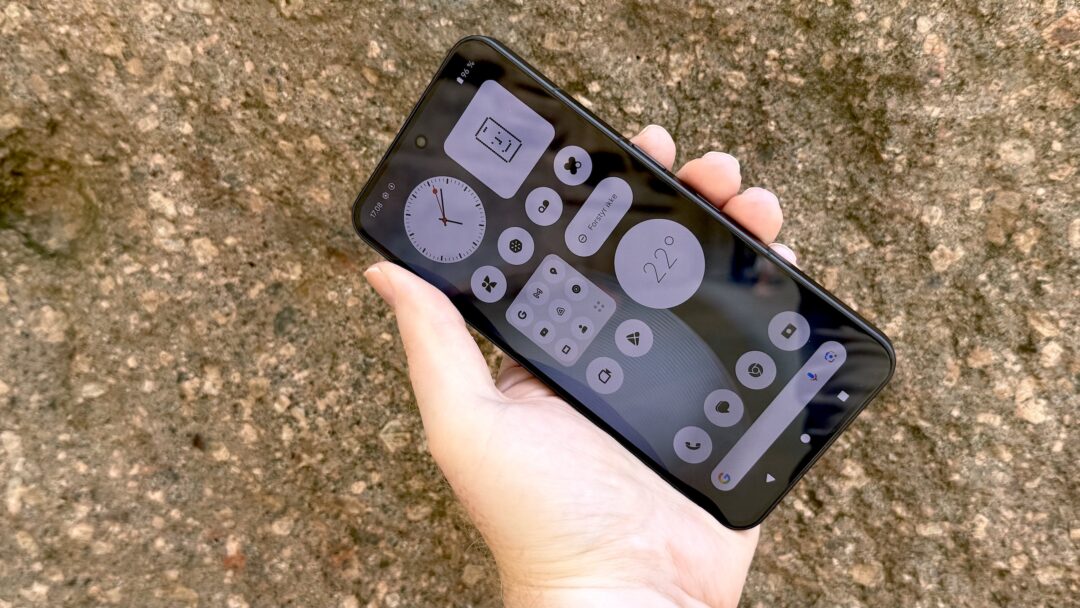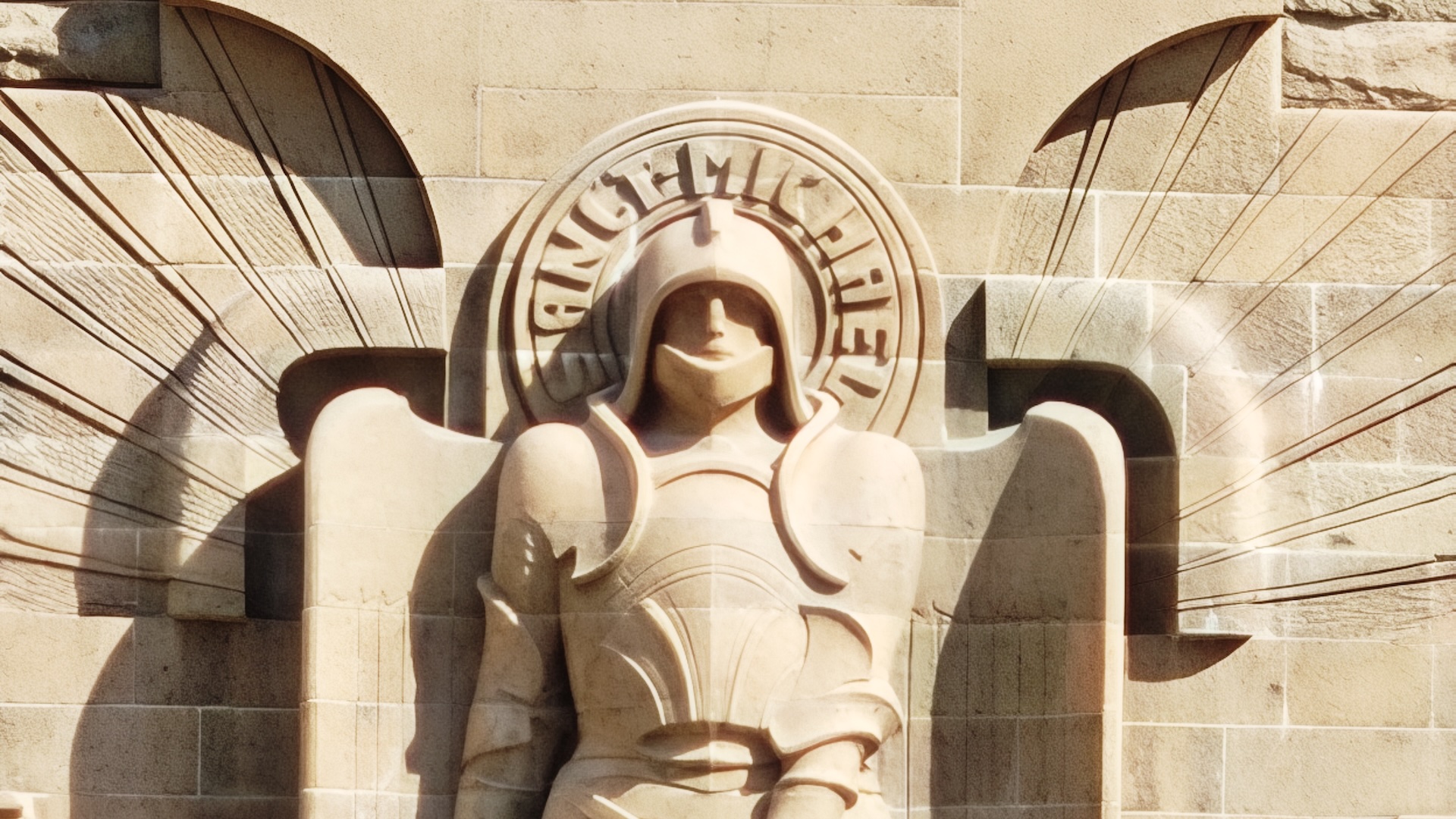Nothing Phone (3) is the first true flagship model from British company Nothing since 2023. In fact, Nothing itself believes that Phone (3) is its first true flagship model ever, but that is somewhat a matter of definition, which we will come back to shortly.
The fact is that since Nothing Phone (2) saw the light of day in the summer of 2023, we have tested Nothing Phone (2a), Nothing Phone (2a) Plus, CMF by Nothing Phone 1, Nothing Phone (3a) Pro and CMF by Nothing Phone 2 Pro, among others.
All of these phones have been more or less at the cheaper end of the price spectrum, and they all share Nothing’s special transparent design and unique Nothing OS user interface.
In that sense, the Nothing Phone (3) is truly something new from the manufacturer, which was founded as recently as 2020 by Swedish-Chinese Carl Pei, who had previously helped start another well-known mobile phone manufacturer, OnePlus.
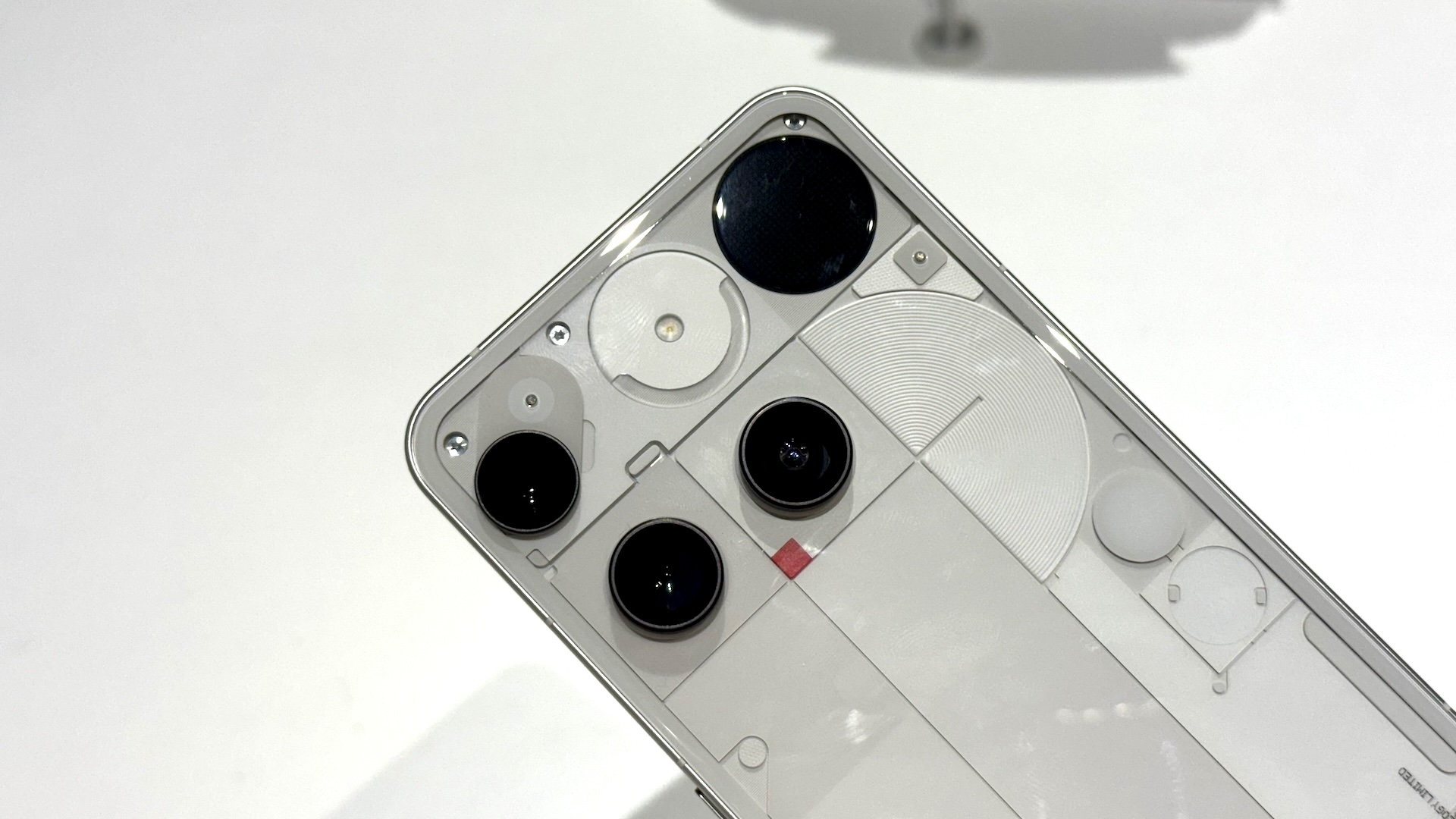
The Nothing Phone (3) is the most expensive smartphone ever from the British company. The most expensive configuration, with 16 gigabytes of RAM and 512 gigabytes of built-in storage, costs just under €900 for the first time, which is truly a different price range than we have seen previously from Nothing.
That said, the Nothing Phone (3) is still not a ‘true’ top model that should be compared to smartphones such as the iPhone 16 Pro Max or Samsung Galaxy S25 Ultra. Instead, it is in the same class as the regular Samsung Galaxy S25 and the Chinese Xiaomi 14T Pro – both popular models from major manufacturers – so the big question is, of course, whether Nothing can get consumers to choose a different brand than they usually do with the Phone (3), now that they have to dig deep into their pockets to pay for their mobile phone at the checkout.
Nothing believes that tech has become boring and that all smartphones look alike and do the same things. With Phone (3), they want to show the world that a mobile phone can be cool, different and worth the money. We have investigated whether this is just hot air or whether there is substance to the promises.
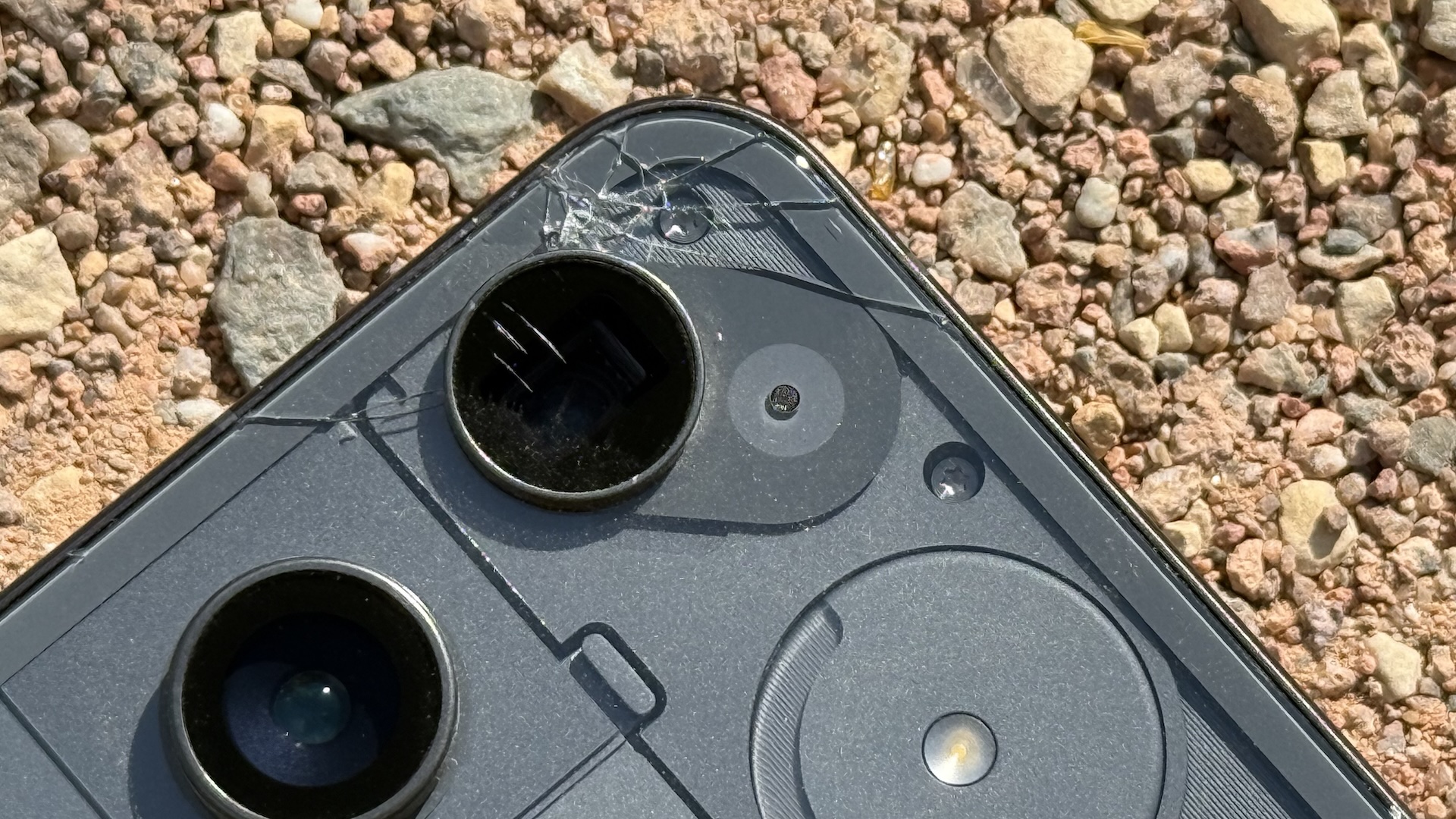
Appearance and construction
The Nothing Phone (3) is certainly still different. The phone retains the transparent design that has made all its predecessors recognisable since the Phone (1). But take a closer look and you will discover significant changes in the construction.
The most striking difference is the new Glyph Matrix, which has replaced the predecessor’s characteristic Glyph Interface. Where the Nothing Phone (2) had 900 small LED lights that formed a pattern on the back, the Phone (3) features a circular disc with 489 individually controllable micro-LEDs that can display icons, text and animations.
Viewed from the front, the Nothing Phone (3) still resembles an iPhone with its flat screen, rounded corners and symmetrical edges. An aluminium frame surrounds the entire phone and gives it a solid feel in the hand.
On the right side, we find the power button and the dedicated Essential Key. The two volume buttons are located on the left side of the phone. The buttons feel precise and responsive, although the placement of the Essential Key takes some getting used to.
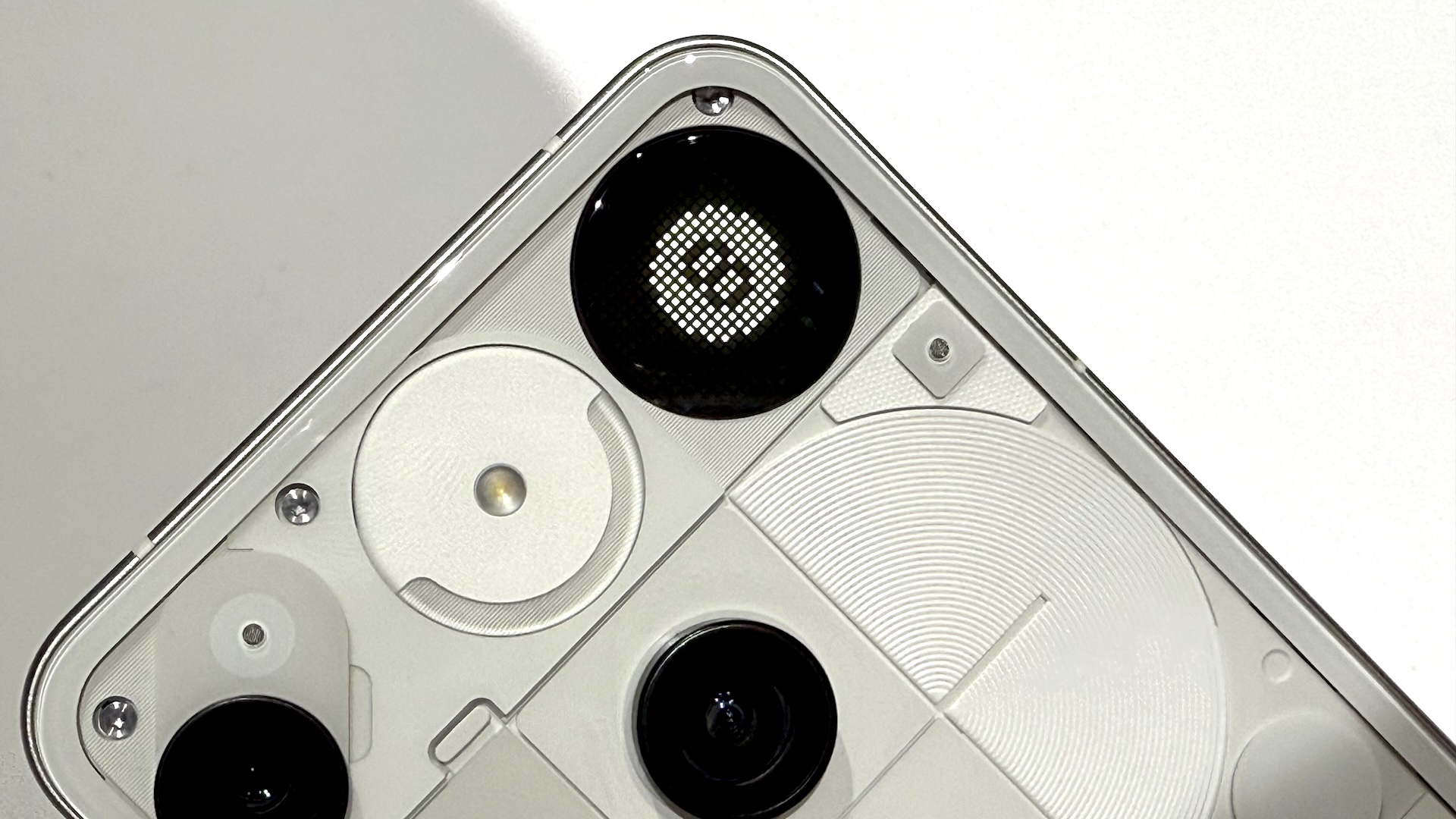
Phone (3) has grown slightly in both thickness and weight compared to its predecessor. At 8.99 mm thick and weighing 218 grams, it is slightly larger than Phone (2), which measured 8.6 mm and weighed 201 grams. The difference is not noticeable in everyday use, but the increase in size is probably a sign that Nothing has chosen to prioritise a larger battery and better components over making the phone as thin as possible.
For the first time, a Nothing phone has IP68 certification, which means it is waterproof to a depth of up to 1.5 metres. Both the front and back are protected by Gorilla Glass – Gorilla Glass 7i on the front and Gorilla Glass Victus on the back. Despite the glass protection, however, the Phone (3) proved vulnerable during our test.
Despite the glass protection, however, Phone (3) proved vulnerable during our test.
When the phone was dropped on the ground from a height of one metre (because the writer is clumsy!), the glass on the back around the camera module broke. Without extra protection, the Phone (3) cannot withstand much abuse, and the damage is particularly unfortunate since Nothing actually includes a phone case in the box. We therefore recommend using it from day one if you want to avoid damage to the otherwise attractive transparent back.
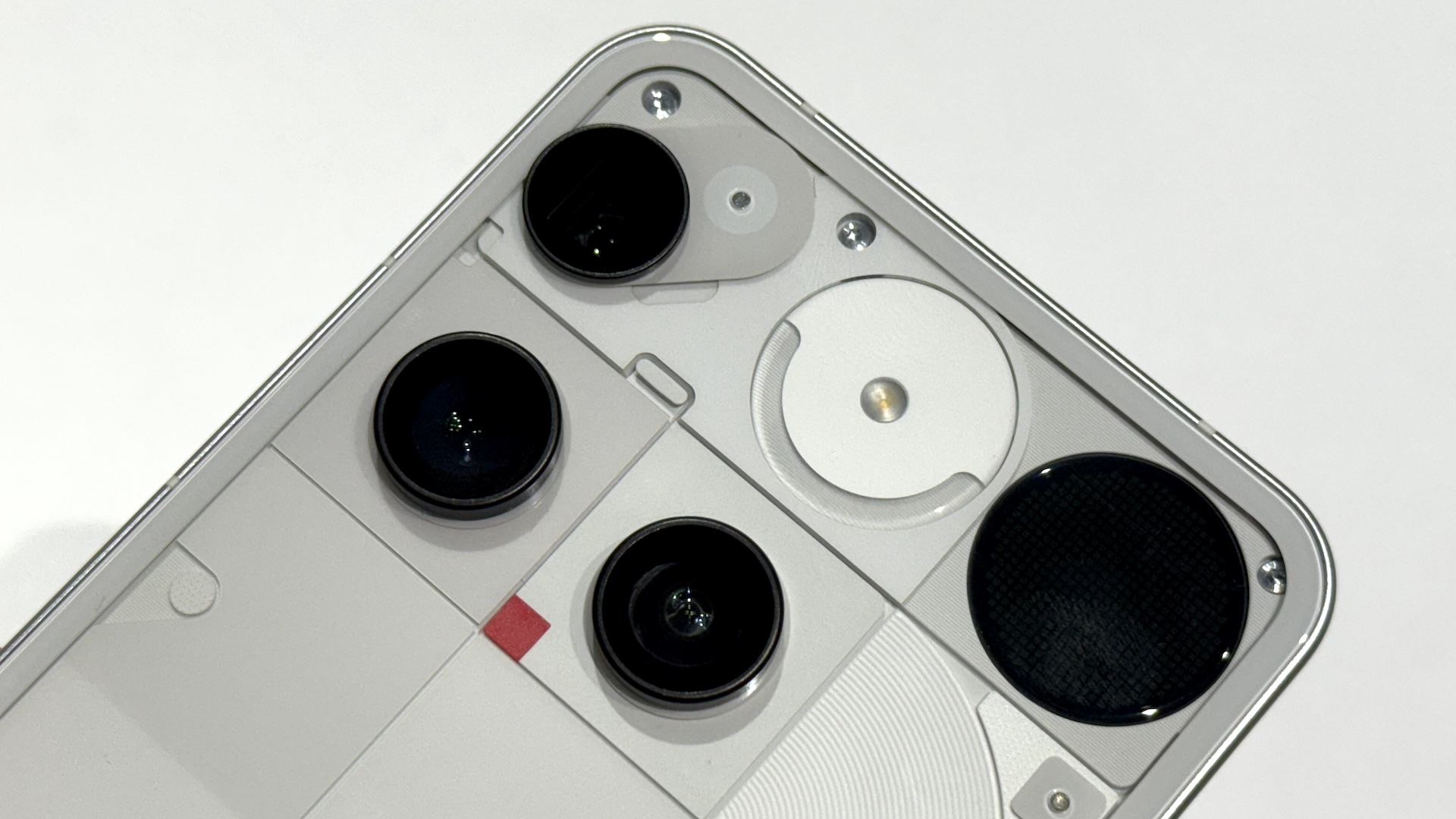
Display and sound
Nothing Phone (3) comes with a 6.67-inch AMOLED display, which on paper impresses with a maximum brightness of 4,500 nits, but this only applies to small areas of the screen when displaying HDR content.
In practice, the screen can be difficult to read if the sun is shining brightly from a cloudless sky. In such a situation, the Phone (3) offers 1,600 nits of brightness, which is actually quite a lot, but still less than you get if you choose even more expensive top models such as the iPhone 16 Pro Max (2,000 nits), Google Pixel 9 Pro XL (no official figure, but measured at 2,700 nits) or Samsung Galaxy S25 Ultra (2,600 nits).
The resolution has been upgraded from Phone (2)’s FHD+ to a sharper 2,800 x 1,260 pixels, giving a pixel density of 460 ppi. The screen image is therefore razor sharp with good colour reproduction and deep blacks.
LTPO technology provides a dynamic refresh rate between 1 and 120 Hz, and the user experience is silky smooth. The screen automatically adapts to the content – from a low, power-saving refresh rate for static text to a high frequency for games and video playback.
HDR10+ is supported, and with a contrast ratio of 1,000,000:1, films and images have cinema-like quality with powerful colours and deep shadows.
On the audio side, the built-in stereo speakers deliver a decent soundstage with good volume. However, they are not among the best we have heard on the mobile front and lack a little richness in the midrange. On the other hand, the phone supports Qualcomm’s aptX, so the sound via Bluetooth earbuds is quite excellent.
Cameras
Nothing has significantly upgraded the camera in Phone (3). Where its predecessor had to make do with two 50-megapixel sensors, the new phone offers four 50-megapixel cameras, including the series’ first periscope telephoto lens.
The primary camera is based on a 1/1.3″ sensor, which, according to Nothing, captures 44 percent more light than Phone (2). Our test images are certainly sharp with precise focusing, and the improved light intake means significantly better results in poor lighting conditions.
The biggest news, however, is the aforementioned periscope telephoto camera with 3x optical zoom. Here, Phone (3) delivers images with impressive sharpness and contrast. Even at 6x hybrid zoom, the details remain usable, while the limitations become apparent at the extreme 30x and 60x AI Super Res Zoom levels. Here, the images are digitally overprocessed and lose sharpness.
The periscope lens also functions as a macro camera and delivers microscopic details. You can see the wing structure of a bee or count the dust particles on a flower. This is a level that normally requires dedicated macro lenses.

The 50-megapixel ultra-wide-angle camera with a 114° field of view performs well in the centre, but sharpness and quality decline towards the edges. This is not unusual, but contrasts with the consistent quality of the main camera.
The 50-megapixel front camera takes excellent selfies with realistic skin tones. The HDR function effectively balances the face and background without losing natural shading.
Nothing has improved the image processing so that colours appear natural without oversaturation. The colour profile is consistent across all lenses, which is not a given on smartphones with multiple cameras.
All in all, Nothing Phone (3) delivers a camera setup that can match far more expensive top-of-the-line phones. The periscope telephoto camera with 3x optical zoom is the big news compared to Phone (2), which in itself makes it worth upgrading to the new model, and the macro function impresses with microscopic details.
Performance and features
The Nothing Phone (3) is equipped with the Snapdragon 8s Gen 4 processor, which delivers significantly better performance than the Phone (2)’s Snapdragon 8+ Gen 1. In our benchmark tests, the phone performed well with 2,093 points in Geekbench 6 single-core and 6,702 in multi-core – results that put it on par with competitors such as the Xiaomi 14T Pro, which, however, costs a little less.
In everyday use, the improved performance is clearly noticeable. Apps open quickly, multitasking works smoothly, and even heavy tasks are handled with ease. However, the phone became extremely hot during some of our benchmark tests – so hot that it had to be put in the fridge. This did not happen during normal use, but when playing larger games such as the racing game Asphalt Legends, you can feel the phone working hard.
Nothing Phone (3) comes with AI features as part of Nothing OS 3.5. However, they are not as innovative as Nothing would like to imply.
‘Essential Space’, which functions as an AI-organised notebook for screenshots, voice memos and ideas, is strikingly similar to the Motorola feature ‘Remember this’, which we became acquainted with when we tested the Motorola Razr 60 Ultra a few months ago. ‘Flip to Record’, which can transcribe and summarise meetings when the phone is turned upside down, has great similarities with Motorola’s ‘Pay Attention’. And for that matter, also the Galaxy AI feature ‘Transcript Assist’. All in all, there is not much new in a dictaphone feature that can transcribe and summarise recordings.
Nothing Phone (2a) is not significantly different from its more expensive predecessors and therefore offers much more value for money.
The AI tools are useful, but Flip to Record, for example, requires a Nothing account to transcribe up to 300 minutes of recordings – a limitation not found in Samsung’s Galaxy AI, for example. Furthermore, only English is supported from the outset, and we do not know when Scandinavian languages will be added. Or if it ever will be.
Nevertheless, we believe that Nothing is on the right track with the dedicated Essential Key and the AI features they have chosen to focus on. Nothing’s AI venture is still in its infancy, but the foundation has been laid.
Glyph Matrix
Glyph Matrix, on the other hand, seems far more useful than its predecessor, Glyph Interface. There are both fun features such as Spin the Bottle to choose who pays the bar bill, and useful options for displaying notifications on the back of the phone – e.g. caller ID or weather alerts. You can individually set which symbol Glyph Matrix should display when your mother-in-law calls. Nothing claims that it helps with digital detox because you don’t have to constantly look at the screen, and it actually works as intended. Unique and now finally truly useful.
The battery life is slightly disappointing despite the largest battery ever in a Nothing mobile phone. With 8 hours and 50 minutes in our stress test of battery performance, it’s a step back from the Phone (2)’s 11 hours and 16 minutes. In addition, no charger is included in the box.
Conclusion
Nothing Phone (3) demonstrates that the British have learned how to make mobile phones. The phone performs on par with other smartphones in the same price range as the Xiaomi 14T Pro and Samsung Galaxy S25, and in some respects it is a pleasant surprise.
The camera is impressive. The periscope telephoto camera and macro function deliver images that you normally only see from significantly more expensive phones. Nothing has hit the mark here.
Glyph Matrix is a significantly improved version of Glyph Interface, and the feature has finally become truly usable. The digital detox approach works as intended and makes Nothing Phone (3) completely unique.
However, the praise does not quite reach the heavens. The fact that the glass on the back cracked just because the phone was dropped once from a height of one metre makes us a little doubtful about how robust the glass actually is. The heat generated when the phone is pushed hard is also a bit worrying, and despite a larger battery, the battery life is a step backwards compared to its predecessor.
But overall, Nothing delivers what it promises with Phone (3). The British company’s new smartphone is truly unlike any other, and it’s not boring either. It delivers solid performance wrapped up in genuinely different features.
So if you want to try something new and different that still delivers on most points, don’t hesitate to buy the Nothing Phone (3). The new smartphone is well worth the money and proof that exciting things can still happen in the mobile market.

We think
Excellent camera with periscope telephoto lens and impressive macro function. Unique Glyph Matrix feature that is actually useful for digital detox. IP68 certification for water resistance. Powerful Snapdragon 8S Gen 4 processor with good performance. Original design that stands out from the crowd. Fragile back despite promises of Gorilla Glass Victus. Battery life is a step back from its predecessor. Can get very hot under load. Limited AI features are not as innovative as Nothing claims, and they only work in English. No charger included.
899 €
Specifications
- Operating system: Android 15 + Nothing OS 3.5
- Updates: 5x Android + 7 years of security updates
- Screen: 6.67″ AMOLED LTPO 1-120 Hz, 1.5K (2,800 x 1,260), 460 ppi
- Processor: Qualcomm Snapdragon Snapdragon 8S Gen 4
- Memory and storage: 16 GB RAM / 512 GB storage
- Cameras: 50 MP f/1.68 wide angle with OIS + 50 MP f/2.2 114° ultra wide angle with EIS + 50 MP f/2.68 periscope with OIS and 3x optical, 6x in-sensor zoom (primary) / 50 MP f/2.2 (front)
- Wireless: 5G, Wi-Fi 7, Bluetooth 6.0, NFC, GPS (L1+L5), GLONASS, Galileo
- Dimensions and weight: 160.6 x 75.59 x 8.99 mm / 218 g
- Battery: 5,150 mAh, 65 W fast charging, 15 W wireless charging
- Web: nothing.tech
Benchmarks
- Geekbench 6: 2.093 (single-core) / 6.702 (multi-core)
- Geekbench 6 compute: 13.565
- Geekbench AI: 3.815 (CPU) / 2.692 (GPU) / 915 (NNAPI)
- AITuTu: 1.351.043 (general) / NA
- AnTuTu 10: 1.895.802
- GFXBench Aztec Ruins (high/4K): 60 / 27 fps
- 3DMark Solar Bay unlimited: 8.210
- PCMark Work 3.0: 12.770
- BrowserBench Speedometer 3.1: 17,7
- Battery test: 8:50 timer
